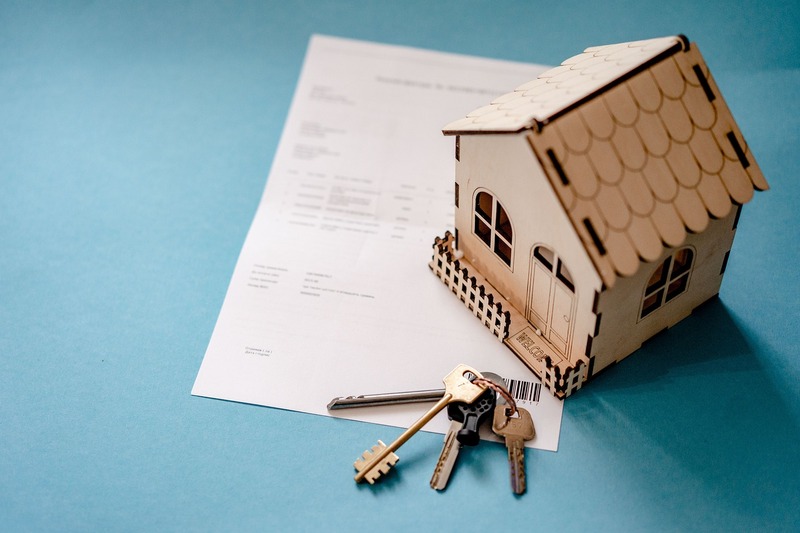A balanced investment portfolio remains key to achieving your financial goals. This guide takes you through 10 simple steps to create a robust, risk-managed, and balanced investment portfolio. So, let’s delve into the world of investing and uncover the secrets to building a balanced investment portfolio.
Importance of a Balanced Investment Portfolio
Stability in Market Fluctuations
A balanced investment portfolio provides stability amidst market fluctuations. A well-diversified portfolio allows you to spread your investments across various asset classes, reducing the potential negative impact of any one investment’s poor performance. This way, if one sector of the market suffers, your balanced investment portfolio can still gain from other well-performing sectors.
Diversification of Assets
By investing in a variety of asset types, a balanced investment portfolio aids in minimizing risk and potentially improving returns. It lessens the chance of overall investment loss because poor performance in one investment can be offset by strong performance in another.
Risk Mitigation
Risk mitigation is an integral part of creating a balanced investment portfolio. When you diversify your investments, you reduce the risk that comes with putting all your money into one type of investment. A balanced investment portfolio includes a mix of equities, bonds, cash, and potentially other asset classes to spread the risk.
Potential for Steady Returns
A balanced investment portfolio has the potential to deliver steady returns over the long term. While it may not provide the highest returns in any given year, it aims to provide moderate, consistent returns and avoid major dips that can occur when you are heavily invested in a single asset class.

Step 1: Assessing Your Risk Tolerance
Self-Assessment Techniques
Before building a balanced investment portfolio, you must assess your risk tolerance. Reflect on how much risk you can comfortably take. If a substantial loss would derail your financial plans or cause you undue stress, you might have a low risk tolerance and should adjust your portfolio accordingly.
Utilizing Professional Risk Assessment Tools
Several online tools and questionnaires can help quantify your risk tolerance. These can be a good starting point, but a conversation with a financial advisor can provide a more nuanced understanding of your risk profile and inform your balanced investment portfolio strategy.
Importance of Considering Time Horizon and Financial Goals
When assessing risk tolerance, consider your time horizon and financial goals. If you’re saving for retirement and have several decades before you need to withdraw money, you might be able to tolerate more risk than if you’re saving for a short-term goal. Your goals and timeline will significantly influence the structure of your balanced investment portfolio.
Step 2: Understanding Different Types of Investment Risk
Market Risk
Market risk is a significant component to consider when building a balanced investment portfolio. It refers to the potential for an investor to experience losses due to factors that affect the overall performance of the financial markets. Understanding market risk helps you in making well-informed investment decisions and structuring a balanced investment portfolio that can withstand market volatility.
Credit Risk
Credit risk, or default risk, involves the possibility that a company or individual will not be able to pay the contractual interest or principal on its debt obligations. This type of risk is especially relevant if you’re investing in corporate bonds or other debt securities in your balanced investment portfolio.
Liquidity Risk
Liquidity risk pertains to the scenario where an investor might not be able to buy or sell investments quickly at a price that closely reflects the true underlying value of the asset. When building a balanced investment portfolio, it’s essential to include some assets that can be easily bought or sold.
Inflation Risk
Inflation risk is the possibility that the value of assets or income will decrease as inflation shrinks the purchasing power of a currency. Inflation causes money to decrease in value at some rate, and does so whether the money is invested or not. It’s a vital factor to consider when building a balanced investment portfolio.
Step 3: Understanding Asset Classes
Equities
Equities, or stocks, represent shares of ownership in a company. They have historically provided higher returns than other asset classes, but they also come with higher risk. A balanced investment portfolio generally includes both domestic and international stocks.
Domestic Stocks
Domestic stocks form a crucial part of your balanced investment portfolio. Investing in domestic companies can be a stable and reliable way to grow wealth.
International Stocks
International stocks bring diversification to your balanced investment portfolio. They provide exposure to the growth of foreign markets and can serve as a hedge against domestic market downturns.
Fixed Income
Fixed income investments, like bonds, provide regular income payments and return the principal upon maturity. While they usually offer lower returns than stocks, they can provide steady income and are generally less risky, making them a vital component of a balanced investment portfolio.
Corporate Bonds
Corporate bonds are debt securities issued by companies. They offer higher interest rates than government bonds due to their higher risk, and they can add diversification and potential for higher income to your balanced investment portfolio.
Government Bonds
Government bonds are deemed low risk because they are backed by the taxing power of a government. They provide stable income and add a safety component to your balanced investment portfolio.
Real Estate
Real estate investments involve purchasing properties for rental income or capital appreciation. This asset class can be a valuable part of a balanced investment portfolio, offering potential returns through both income and price appreciation.
Commodities
Commodities like gold, oil, or agricultural products can offer a hedge against inflation and a counterbalance to the volatility of other asset classes in your balanced investment portfolio.

Step 4: The Role of Diversification in a Balanced Portfolio
How Diversification Works
Diversification is the practice of spreading your investments around so that your exposure to any one type of asset is limited. This strategy helps reduce the volatility of your balanced investment portfolio, making it less likely that your portfolio will suffer a major downturn if one investment performs poorly.
Correlation Between Asset Classes
Understanding correlation between different asset classes is crucial when building a balanced investment portfolio. When two asset classes have a high correlation, they tend to perform similarly. By including asset classes with low correlation to each other in your portfolio, you can further optimize diversification.
Benefits of Diversification
Diversification can help improve the risk-return trade-off in your balanced investment portfolio. It’s unlikely that all asset classes will decline at the same time, so owning a diversified mix can help to cushion against falls and potentially smooth out your investment returns over time.
Step 5: Setting Your Investment Goals
Short-term Goals
Short-term goals are typically for things you’ll need within a few years. It would be best to avoid significant risk for these goals, and they should be funded with the more secure portion of your balanced investment portfolio.
Mid-term Goals
Mid-term goals are usually set for things you want to achieve in the next 5 to 10 years. It may be appropriate to take a moderate level of risk for these goals, depending on your overall risk tolerance.
Long-term Goals
Long-term goals are often set for things you hope to achieve in 10 years or more. With a long-term time horizon, you can generally afford to take on more risk for potentially greater returns in your balanced investment portfolio.
Step 6: Creating Your Ideal Asset Allocation
Defining Asset Allocation
Asset allocation involves dividing your investments among different asset classes such as equities, fixed income, real estate, and commodities. The right allocation for your balanced investment portfolio depends on your risk tolerance and investment goals.
Asset Allocation Based on Risk Tolerance and Goals
An aggressive investor, willing to accept periods of extreme market volatility for the possibility of receiving a higher return over the long term, may opt for a portfolio with a larger percentage of equities. On the other hand, a conservative investor, who prefers lower volatility and more predictable income, may prefer a balanced investment portfolio with a larger allocation to bonds and cash.

Step 7: Selecting the Right Investment Instruments
Individual Stocks and Bonds
Individual stocks and bonds may suit you if you’re comfortable researching and picking individual investments. They can add depth to your balanced investment portfolio and provide the potential for significant returns, but they also come with higher risk.
Mutual Funds
Mutual funds pool money from multiple investors to invest in a diversified portfolio of stocks, bonds, or other assets. They are managed by professionals and can be a simple way to achieve a balanced investment portfolio.
Exchange-Traded Funds (ETFs)
ETFs are like mutual funds but are traded on an exchange like individual stocks. They offer diversification, flexibility, and lower costs, making them a valuable tool in building a balanced investment portfolio.
Real Estate Investment Trusts (REITs)
REITs offer a way to invest in real estate without having to buy, manage, or finance properties yourself. They can add real estate exposure to your balanced investment portfolio with the convenience of stock-like trading.
Index Funds
Index funds aim to track the performance of a specific index. They offer broad market exposure and low fees, making them a solid foundation for a balanced investment portfolio.
Step 8: Portfolio Rebalancing: When and How
Understanding Rebalancing
Rebalancing is the process of realigning the weightings of a portfolio’s assets to maintain a desired asset allocation. In a balanced investment portfolio, rebalancing helps ensure your portfolio does not overemphasize one or more asset categories, and the portfolio continues to reflect your investment goals and risk tolerance.
Importance of Regular Reviews and Adjustments
Regular reviews and adjustments are key to maintaining a balanced investment portfolio. Market movements may cause your portfolio’s actual allocation to drift away from your target allocation. By periodically rebalancing, you can ensure your portfolio stays aligned with your investment strategy.
Techniques for Effective Rebalancing
Rebalancing can be done in various ways, such as selling investments from over-weighted categories and using the proceeds to buy investments in under-weighted categories. Another method is to make new investments in under-weighted categories until the balance is restored.
Step 9: Monitoring Your Investments
Regular Review of Investment Performance
Continuously monitoring the performance of your balanced investment portfolio is critical. Regular review allows you to assess how your investments are performing against your goals and whether you need to make any changes.
Reviewing Changes in Risk Levels
The risk level of your balanced investment portfolio may change over time due to changes in market conditions or in the investments themselves. Regular reviews can help identify any such changes so you can adjust your portfolio as necessary to maintain your desired risk level.
The Role of a Financial Advisor
A financial advisor can provide valuable guidance in monitoring your investments. They can offer expert advice based on market trends, helping you make informed decisions for your balanced investment portfolio.
Step 10: Managing Emotions and Sticking to Your Plan
The Psychology of Investing
Investing can provoke strong emotions. It’s important to stay calm during market ups and downs and stick to your long-term investment plan. Rash decisions based on short-term market fluctuations can harm the performance of your balanced investment portfolio.
Avoiding Common Investor Pitfalls
Common pitfalls, such as chasing performance, can derail your investment strategy. Staying focused on your investment goals and maintaining a balanced investment portfolio can help you avoid such pitfalls.
Importance of Long-term Commitment
Building a balanced investment portfolio is a long-term commitment. It’s important to stay patient and consistent, and remember that successful investing is a marathon, not a sprint.
In conclusion, understanding risk and incorporating it into your investment strategy is key to building a balanced investment portfolio. By taking these steps, you can create a portfolio that aligns with your risk tolerance and helps you achieve your financial goals. As always, consider seeking advice from financial professionals to assist you on your investment journey.
Conclusion
Building a balanced investment portfolio is not a one-size-fits-all operation. What works for one person might not work for another, and your personal risk tolerance plays a crucial role in determining the makeup of your portfolio. By taking the steps outlined in this guide—assessing your risk tolerance, understanding different types of investment risk and asset classes, setting investment goals, creating your ideal asset allocation, selecting the right investment instruments, regularly rebalancing your portfolio, and maintaining a disciplined approach—you can create a portfolio that aligns with your risk tolerance. This portfolio won’t just be a random assortment of investments; it will be a carefully curated collection that works in harmony to help you achieve your specific financial goals.
In sum, a balanced investment portfolio is a powerful tool in your financial arsenal. With a solid understanding of risk, a well-thought-out strategy, and possibly the guidance of financial professionals, you can build a balanced investment portfolio that helps you weather market ups and downs and moves you steadily towards your financial goals. Investing is a journey, and with the right preparations, it can be a rewarding one.

No responses yet